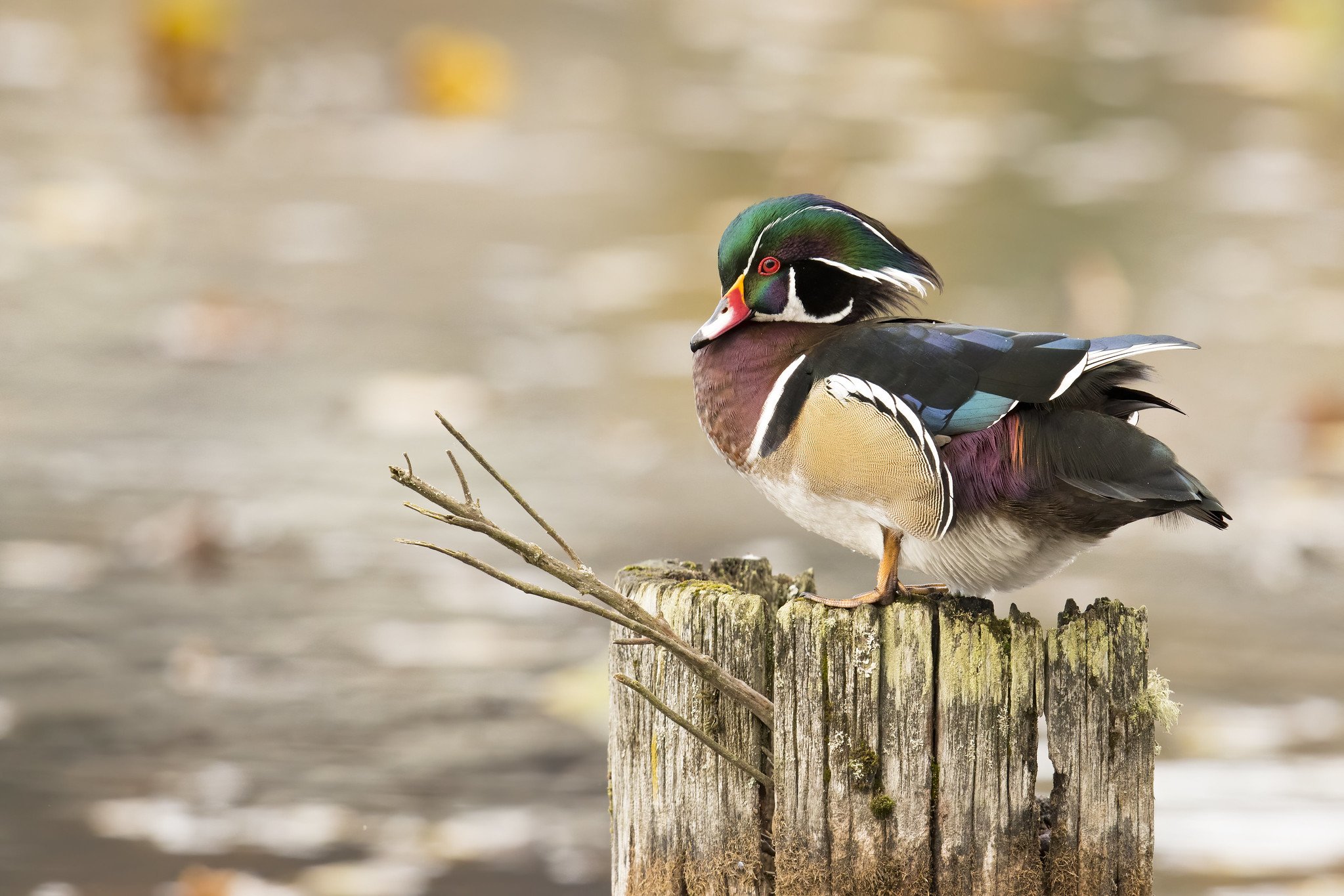The Wood Duck is one of the great conservation success stories in the United States. By the turn of the 20th century, market hunting and habitat destruction saw the Wood Duck on the brink of extinction. For those Wood Ducks hiding out in lowland shrubby and forested swamps, the Migratory Bird Treaty Act of 1918 came just in the nick of time. Up to that point, the bird was believed to be the most hunted waterfowl species in North America.
Male Wood Duck. Photo by Mick Thompson
A cavity nester, the Wood Duck needs both wetlands for foraging and mature forest for a sizable cavity. By the time the Migratory Bird Treaty Act came into effect in 1918, most forests in Wisconsin had been clearcut, and large trees that could provide a cavity were rare, and what was left standing was burned over to clear land for agriculture. Moreover, wetland degradation and conversion continues even today, but has slowed due to a number of legislative acts like the Clean Water Act of 1972, and the Food Security Act of 1985, which suspended agricultural subsidies to farmers who drained wetlands.
Thus, in most states, Wood Duck hunting didn’t resume until the 1960’s, as population levels were still recovering. In Wisconsin, the annual Waterfowl Breeding Population Survey lumped the Wood Duck into “other species” up until 2004. In 1973, the first year of the survey, the WDNR estimated the population at a little over 9,000 Wood Ducks. The 2021 survey estimated over 200,000.
Certainly, a large part in the Wood Duck recovery has been the implementation of a nest box program. Locally at Faville Grove, volunteers monitor and maintain hundreds of Wood Duck boxes each year to great effect. Most boxes are occupied and produce a clutch of eggs. The natural and restored wetlands at Faville Grove provide excellent foraging habitat.
Wood Duck on a Wood Duck nest box. Photo by Courtney Celley / USFWS
The origin of nest boxes for Wood Ducks also traces back to Faville Grove. Arthur Hawkins, one of Aldo Leopold’s graduate students, was also the manager of the Faville Grove Wildlife Experimental Area. After earning his Master’s while conducting field work at Faville Grove, Hawkins headed to Illinois and placed the first 700 Wood Duck nest boxes–rough cut cypress boxes, about half of which were occupied by Wood Ducks. Even on those first boxes, Hawkins colorfully recounted a racoon trying to wipe out the whole colony.
Today, you can find recently returned Wood Ducks across the Faville Grove landscape. Where there’s a nest box, you’ll likely find nesting ducks, and this is due in no small part to a long history of conservation at Faville Grove.
Written by Drew Harry, Faville Grove Sanctuary land steward
Cover photo by Jim Hudgins / USFWS






